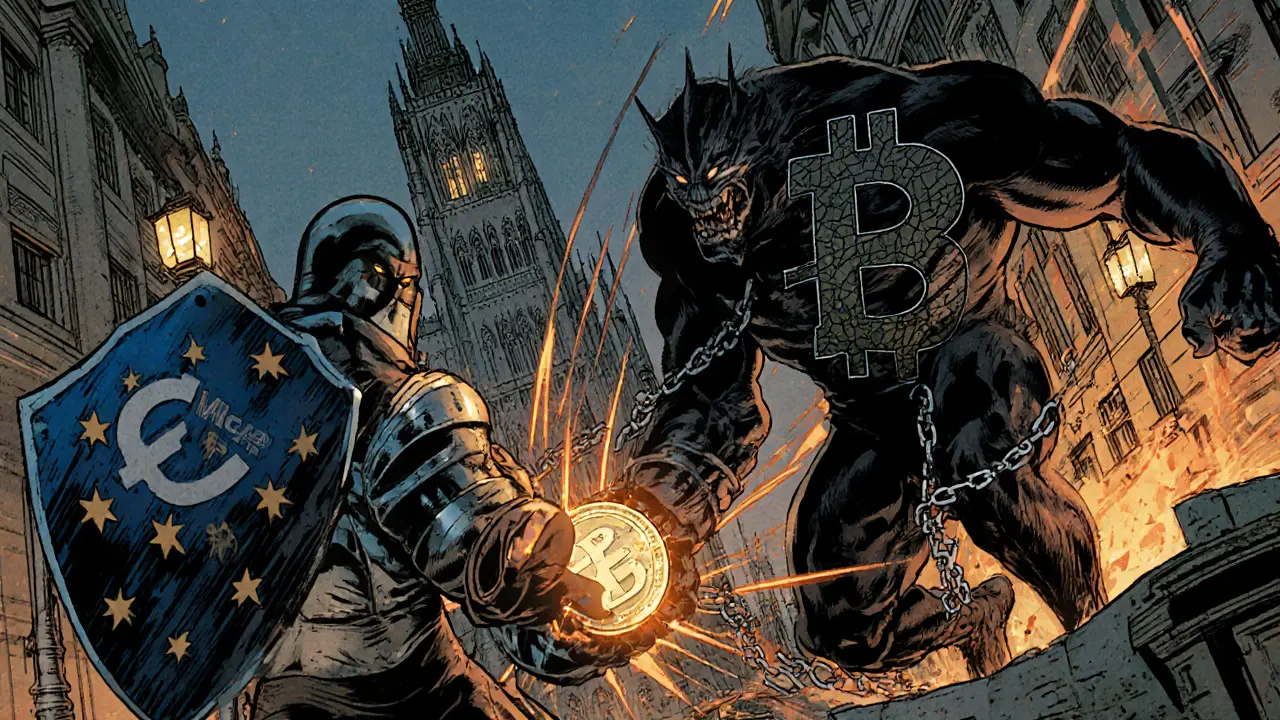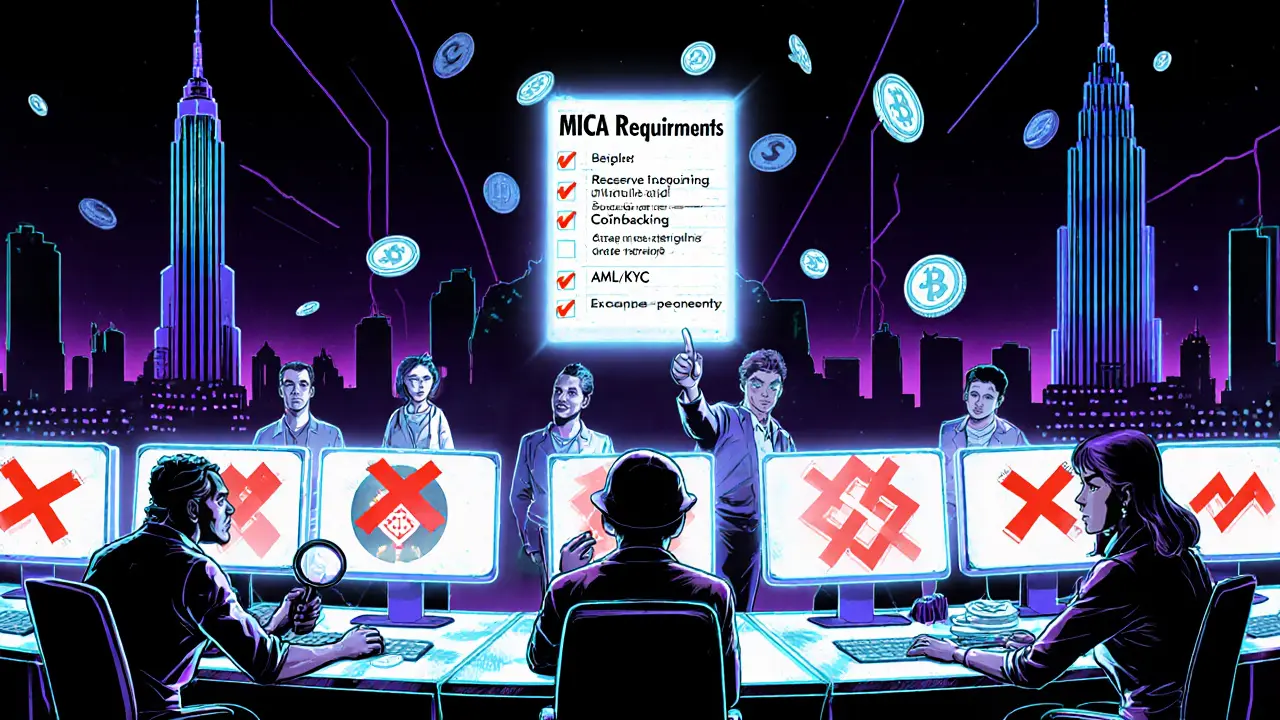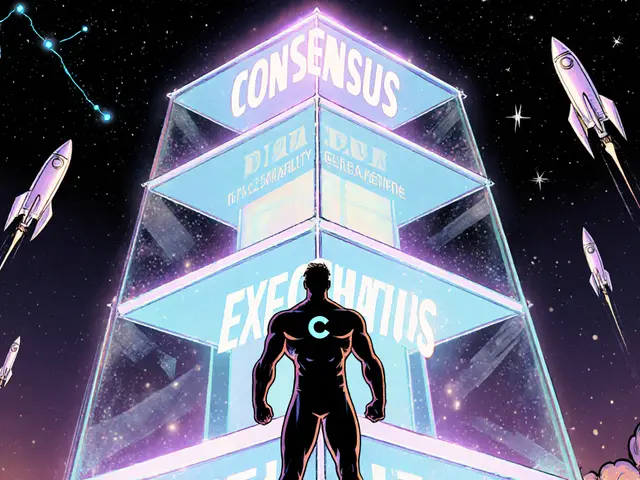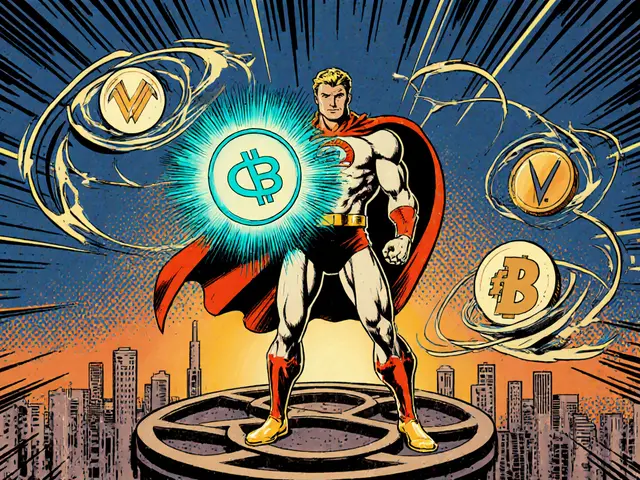
EU Stablecoin Compliance Checker
Check Stablecoin Compliance
Enter details about a stablecoin to determine if it meets EU MiCA requirements.
Compliance Result
On July 1, 2025 the European Union turned the tide on one of the world’s most traded stablecoins. USDT ban EU refers to the prohibition of Tether’s USDT on all EU‑registered exchanges, enforced under the Markets in Crypto‑Assets Regulation (MiCA). If you hold USDT in a European wallet, trade it on a local exchange, or rely on it for cross‑border payments, you’ll notice the change this week. Below is a plain‑English walk‑through of why the ban happened, what the law requires, how major platforms responded, and which stablecoins you can safely use going forward.
Quick Summary
- MiCA’s stablecoin rules became enforceable on June 30, 2024; the EU gave issuers until July 1, 2025 to comply.
- USDT failed to meet MiCA’s reserve‑backing, audit, and AML/KYC transparency demands.
- OKX, Coinbase and Binance have already delisted or restricted USDT for EU customers.
- Five MiCA‑compliant stablecoins (e.g., USDC, FDUSD, TUSD, DAI, AEUR) are now the main alternatives.
- Businesses still using USDT must either convert holdings before the deadline or risk asset blockage.
What MiCA Requires from Stablecoins
MiCA (Markets in Crypto‑Assets Regulation) is the EU’s first blanket law for crypto assets. It separates stablecoins into two buckets:
- Electronic Money Tokens (EMTs) - backed 1:1 by a single official currency (e.g., USD). USDT falls into this category.
- Asset‑Referenced Tokens (ARTs) - backed by a basket of assets, such as multiple fiat currencies or commodities.
For both groups, MiCA forces issuers to:
- Obtain a formal authorization from a national competent authority (e.g., France’s Autorité de Contrôle Prudentiel et de Résolution (ACPR)).
- Hold liquid reserves equal to the total token supply, segregated from the company’s own assets.
- Publish a detailed white‑paper describing reserve composition, governance, and risk‑management policies.
- Submit quarterly audit reports verified by an independent auditor.
- Integrate fully automated AML/KYC checks that trace every transaction on the blockchain.
- Trigger additional capital buffers when daily transaction volumes exceed €200million.
Missing any of these checkpoints puts an issuer in violation and opens the door to a ban.
Why USDT Didn’t Pass the Test
The world’s biggest stablecoin, issued by Tether Limited, has long been praised for liquidity but has struggled with the transparency MiCA demands.
- Reserve opacity - Tether publishes a “proof‑of‑reserves” snapshot only monthly, and the exact composition (cash, commercial paper, crypto) is not disclosed in real‑time.
- Audit lag - Independent audits are released after the fact and are not continuously available for regulator review.
- AML/KYC gaps - Though Tether claims to have KYC on onboarded users, the on‑chain data is not automatically linked to a regulatory AML system, breaching MiCA’s traceability clause.
- Capital reserve shortfall - For daily flows above €200million, MiCA requires an extra buffer; Tether’s public disclosures never confirm meeting that threshold.
Because Tether never filed for MiCA authorization, the EU treated the stablecoin as non‑compliant on the effective date, giving exchanges a clear deadline to stop offering it.
How Major Exchanges Handled the Ban
Regulators gave crypto‑asset service providers (CASPs) until July1,2025 to either obtain a MiCA licence or remove the token. Here’s what the biggest platforms did:
| Exchange | Action Taken | Key Dates |
|---|---|---|
| OKX | Full delisting of all USDT pairs for EU users. | June2025 (pre‑ban preparation) |
| Coinbase | USDT removed from European customer portfolio; users prompted to convert by July1. | February2025 announcement; deadline July1,2025. |
| Binance | Phase‑out: sell‑only mode from May2025, full delist by March31,2025 for EU. | March2025 final removal. |
These moves were not optional; failure to comply would have meant hefty fines or loss of operating licences in the European Economic Area.

What You Can Use Instead of USDT
MiCA‑compliant stablecoins already meet the reserve‑backing and reporting standards. While the exact list is still evolving, five tokens have secured authorisation or are on a fast‑track path:
- USDC - Fully backed by USD cash and Treasury securities; audited monthly.
- FDUSD - A US‑based EMT with real‑time reserve disclosures.
- TUSD - Uses a transparent escrow model, audited by a Big‑4 firm.
- DAI - An ART referencing a basket of crypto assets, but recently granted a MiCA exemption for its decentralized governance.
- AEUR - The euro‑pegged token issued by a regulated French bank, fully compliant with ECB guidelines.
All these tokens are now available on the same exchanges that dropped USDT, often with similar liquidity and fee structures.
Impact on Businesses and Cross‑Border Payments
Companies that relied on USDT for rapid settlement discovered a hidden cost: the need to re‑engineer their payment pipelines. A recent COREDO study found that 38% of European fintechs experienced "transaction delays" when converting USDT holdings into MiCA‑approved alternatives. The primary friction points were:
- Manual reconciliation of USDT balances before the deadline.
- Bank‑level due‑diligence checks on the new stablecoins, which some legacy systems flagged as "unknown".
- Regulatory reporting updates - firms had to file new AML‑KYC files for each token.
For most firms, the safe route is to move to a single MiCA‑authorized EMT (like USDC) and keep audit trails in a centralized compliance dashboard.
Future Outlook: Will MiCA Shape Global Stablecoin Rules?
Europe’s decisive action sends a clear message: regulators will not tolerate opaque reserve practices. The ban has already spurred other jurisdictions to draft similar requirements. Analysts at Aurum Law note that the UK’s upcoming “Crypto Asset Regulation” mirrors MiCA’s EMT/ART split, while the U.S. Treasury is considering a “Stablecoin Transparency Act.” If you’re a crypto‑native or a traditional finance player, aligning with MiCA compliance now could future‑proof your operations worldwide.
Next Steps for EU Users Holding USDT
Here’s a checklist to avoid surprises:
- Check your exchange - Verify whether USDT is still listed for your account. If not, you’ll see a “sell‑only” notice.
- Convert before July1 - Transfer USDT to a compliant stablecoin (USDC or FDUSD) using the exchange’s conversion tool.
- Withdraw to a personal wallet - If you prefer self‑custody, move the new token to a hardware wallet that supports ERC‑20 assets.
- Update your bookkeeping - Record the conversion date, token type, and transaction hash for AML/KYC reporting.
- Stay informed - Follow announcements from the European Securities and Markets Authority (ESMA) for any extensions or new compliance deadlines.
Skipping any of these steps could leave your funds frozen on an exchange that loses its license or on a bank that blocks transactions linked to non‑compliant assets.
Frequently Asked Questions
Why was USDT singled out when other stablecoins remain?
MiCA treats any EMT that cannot prove a 1:1, liquid reserve as non‑compliant. USDT’s reserve disclosures are quarterly and lack real‑time transparency, while tokens like USDC provide daily attestation and audited bank accounts. The regulator therefore required a ban until Tether meets the same standards.
Can I still trade USDT on non‑EU platforms?
Yes, if the exchange is not registered in the European Economic Area. However, your wallet provider may still apply geo‑blocking, and you could face AML scrutiny when moving funds into the EU.
What are the main compliance benefits of using a MiCA‑approved stablecoin?
You get: (1) guaranteed reserve backing, (2) regular independent audits, (3) automated AML/KYC integration, and (4) protection against asset freezes by EU regulators.
Will the ban affect USDT’s price globally?
Not dramatically. USDT remains heavily traded in the U.S., Asia and offshore markets. The EU accounts for roughly 8% of global stablecoin volume, so the impact is localized.
How can businesses prepare for future EU crypto regulations?
Secure a MiCA licence or partner with a licensed VASP, adopt real‑time reserve reporting tools, and embed automated AML/KYC checks into your transaction pipeline.






There are 5 Comments
Patrick Rocillo
Aniket Sable
Santosh harnaval
Claymore girl Claymoreanime
Will Atkinson
Write a comment
Your email address will not be published. Required fields are marked *